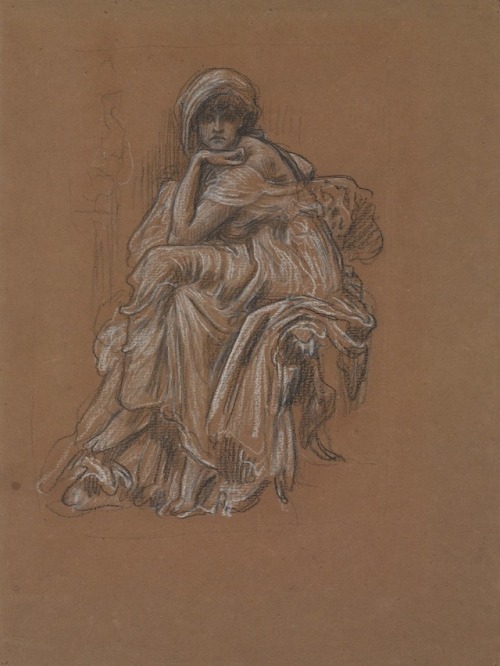Charcoal has been used by artists for tens of thousands of years; the oldest surviving examples are
Charcoal has been used by artists for tens of thousands of years; the oldest surviving examples are found in caves around the world. As the name suggests, the charcoal used by artists is made from burned wood. Today, it comes in three forms: vine–made from willow branches heated in an environment without oxygen, compressed–charcoal powder mixed with a binder then formed into a square stick or the center of a pencil, and powder. Charcoal smudges easily which is excellent for creating shade and tone like we see in Lord Frederick Leighton’s study, but also requires that a finished work be coated with a fixative to prevent further smudging. Soft charcoal, like the vine type, is useful for bold, gestural lines as in Berthe Morisot’s drawing.Posted by Elizabeth TreptowLord Frederick Leighton (British, 1830-1896). Study for the Painting “Sybil.” . Charcoal and chalk on wove paper, Sheet: 14 9/16 x 10 7/8 in. (37 x 27.6 cm). Brooklyn Museum, Gift of Russell Barrington, 20.831 ⇨ Berthe Morisot (French, 1841-1895). Study for La Musique, 1893. Charcoal on laid paper. Brooklyn Museum, Gift of Mrs. Carl L. Selden, 1991.160 -- source link
Tumblr Blog : brooklynmuseum.tumblr.com
#bkmworksonpaper#charcoal#artits#caves#artists#wood#pencil#powder#smudge#berthe morisot#european art#bkmeuropeanart#bold#gestural#brooklyn#brooklyn museum

